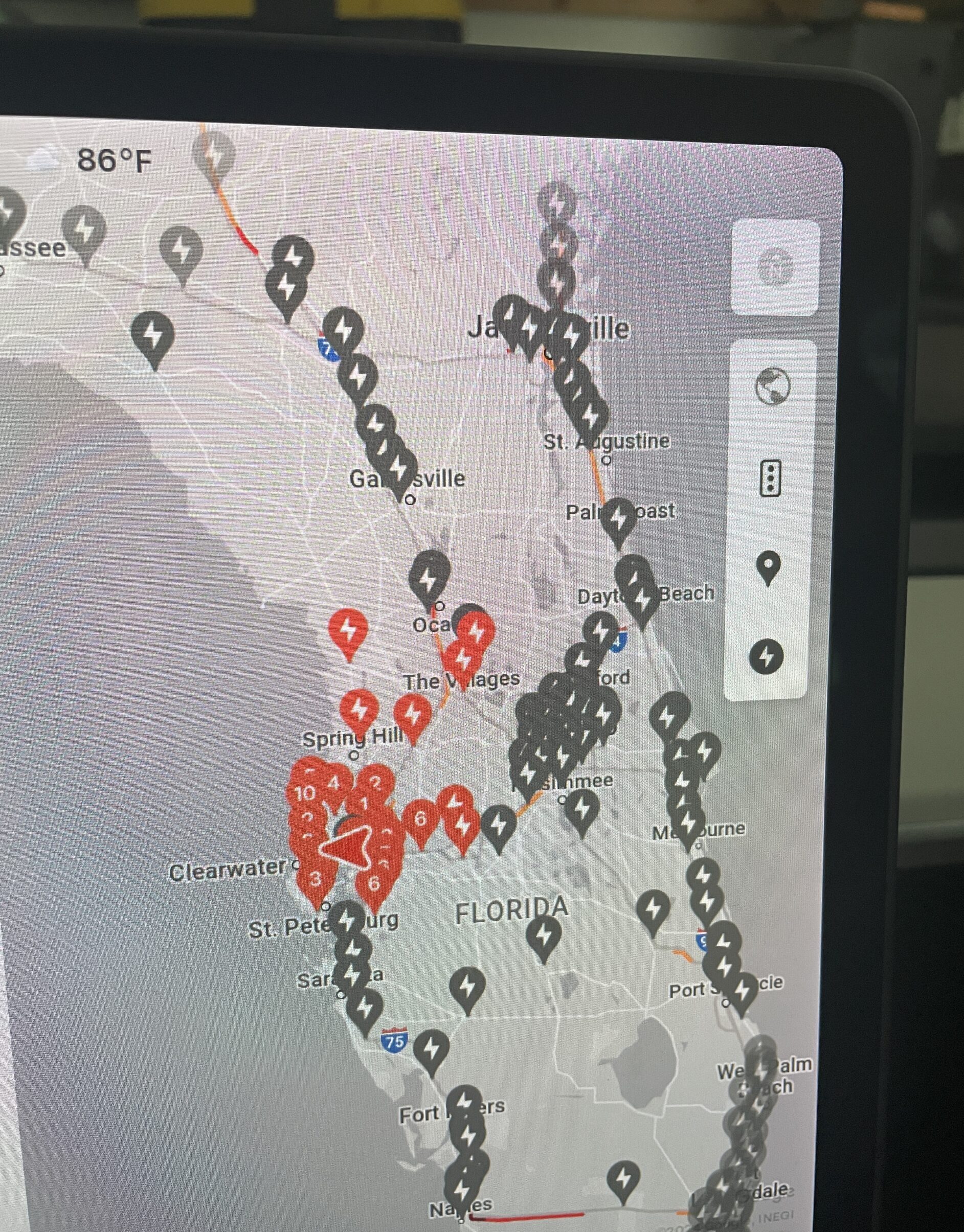Sign up for daily news updates from CleanTechnica on email. Or follow us on Google News!
Data centers have always been voracious consumers of electricity, but the latest surge in so-called artificial intelligence has caused a dramatic increase in how much power those data centers consume. One solution is to design new computer chips that consume less power. The communications center at CleanTechnica, which is powered solely by pixie dust, is bombarded with emails every day from press agents who want to tell us about how some person in Peoria has created just such a new computer chip and how it is going to be the greatest thing since the electric fork, but when we ask for verifiable information? Crickets.
We presume Intel, AMD, Nvidia, and hundreds of other companies are working on this problem night and day, and when it happens we will share that news with you, but in the meantime, the companies that operate those data centers are casting a wide net, looking for any ideas that might allow them to find more power for those facilities. They can’t just call up the local utility and ask for a pole drop. The companies don’t want to power their operations with electricity from coal- or methane-powered thermal generating stations. They want clean renewable energy and lots of it.
Data Centers Gobble Electricity
A report by the Washington Post says the artificial intelligence industry is driving a nationwide data center building boom. These sprawling warehouses of computing infrastructure are creating explosive demand for power, water, and other resources. As the tech giants compete in a global AI arms race, a frenzy of data center construction is sweeping the country. Some computing campuses require as much energy as a modest-sized city, turning tech firms that promised to lead the way into a clean energy future into some of the world’s most insatiable guzzlers of power. Their projected energy needs are so huge, some worry whether there will be enough electricity from any sources to meet the demand.
The International Energy Agency claims a ChatGPT-powered search consumes almost 10 times the amount of electricity as a traditional search on Google. Tech companies had promised “clean energy would be this magical, infinite resource,” Tamara Kneese, a project director at the nonprofit Data & Society, which tracks the effect of AI, told the Washington Post. She accuses the tech industry of using “fuzzy math” in its climate claims. “Coal plants are being reinvigorated because of the AI boom. This should be alarming to anyone who cares about the environment,” she said.
The tech giants say they buy enough wind, solar, or geothermal power every time a big data center comes online to cancel out its emissions. But critics see a shell game with these contracts. The companies are operating off the same power grid as everyone else, while claiming for themselves much of the finite amount of green energy. Utilities are then backfilling those purchases with fossil fuel expansions, regulatory filings show.
Microsoft told the Washington Post that “by 2030, we will have 100% of our electricity consumption, 100% of the time, matched by zero carbon energy purchases.” But the Post story points out that what is left unsaid is that heavily polluting fossil fuel plants are becoming necessary to stabilize the power grid overall and make sure everyone has enough electricity.
Do Data Centers Boost Thermal Generation?
In the Salt Lake City region, utility executives and lawmakers recently scaled back plans for big investments in clean energy and doubled down on coal. The retirement of a large coal plant in the area has been pushed back a decade, to 2042, and the closure of another has been delayed to 2036. Among the region’s mega energy users is Meta, which is building a $1.5 billion data center campus outside Salt Lake City that will consume electricity equivalent to a large nuclear reactor. Google has purchased 300 acres across the street and plans its own data center campus. Other data center developers are frantically searching for power in the area.
The region was supposed to be a “breakthrough” technology launchpad, with utility PacifiCorp declaring it would aim to replace coal infrastructure with next-generation small nuclear plants built by a company backed by Bill Gates. But that plan was put on hold when PacifiCorp announced in April that it will prolong coal burning, citing regulatory developments that make it viable.
“This is very quickly becoming an issue of, don’t get left behind locking down the power you need, and you can figure out the climate issues later,” said Aaron Zubaty, CEO of California-based Eolian, a major developer of clean energy projects. “Ability to find power right now will determine the winners and losers in the AI arms race. It has left us with a map bleeding with places where the retirement of fossil plants are being delayed.” Ganesh Sakshi, chief financial officer of Mountain V Oil & Gas, which provides natural gas to industrial customers in Eastern states, said, “They are starting to think like cement and chemical plants. The ones who have approached us are agnostic as to where the power is coming from.”
A spike in energy needs for data centers in Georgia convinced regulators in April to approve an expansion of fossil fuel use, including purchasing power from Mississippi that will delay closure of a 50-year-old coal generating station. In the suburbs of Milwaukee, Microsoft’s announcement in March that it is building a $3.3 billion data center campus followed the local utility pushing back by one year the retirement of coal units and unveiling plans for a vast expansion of methane power that regional energy executives say is necessary to stabilize the grid amid soaring data center demand and other growth. In Omaha, where Google and Meta recently set up sprawling data center operations, a coal plant that was supposed to go offline in 2022 will now be operational through at least 2026. The local utility has scrapped plans to install large batteries to store solar power.
The Greater Good
The companies generally pooh-pooh claims that they are using too much electricity from dirty sources.They argue that advancing AI now could prove more beneficial to the environment than curbing electricity consumption. They say AI in their data centers is already being harnessed to make the electrical grid smarter, speed up innovation of new nuclear technologies, and track emissions. CleanTechnica readers may notice some disturbing parallels between those claims and the excuses the fossil fuel industry concocts to justify its continuing push to extract every last molecule of coal, oil, and methane before the environment collapses. Does the end justify the means? That often depends on who is paying whom to do what.
“If we work together, we can unlock AI’s game-changing abilities to help create the net zero, climate resilient and nature positive works that we so urgently need,” Microsoft said in a statement. Amazon said it has been “the world’s largest corporate purchaser of renewable energy for four straight years.” Google wrote that it is using AI “to accelerate climate action,” which is “just as crucial as solving for the environmental impact associated with it.”
Fusion Power & Geothermal
Tech companies are confronting the clean power for their data centers dilemma with bravado, the Washington Post says. Artificial intelligence thinkers such as OpenAI CEO Sam Altman, who is a major backer of Helion, the fusion power startup supported by Microsoft and Bill Gates, say breakthroughs in energy are achievable. They expect to harness fusion energy by 2028, an audacious claim that bolsters their promises to transition to green energy but distracts from current reality.
In addition to fusion, tech giants are hoping to generate power through such futuristic schemes such as small nuclear reactors hooked to individual computing centers and systems that tap into geothermal energy created by hot rocks many thousands of feet below the surface. One company that is pursuing that technology is Fervo Energy, which will provide 115 MW of clean electricity to Google in Nevada.
A recent Goldman Sachs analysis of the energy that will be needed to power the AI boom into 2030 did not even consider small nuclear plants or futuristic fusion generators. It found data centers will account for 8% of total electricity use in the United States by 2030 — triple what is used today. New solar and wind energy will meet about 40% of that demand from data centers, while the rest will come from a vast expansion in the burning of methane gas. The new emissions created would be comparable to adding 15.7 million additional gasoline-powered cars on the road.
“We all want to be cleaner,” Brian Bird, president of NorthWestern Energy, a utility serving Montana, South Dakota, and Nebraska, told a recent gathering of data center executives in Washington, D.C. “But you guys aren’t going to wait 10 years. My only choice today, other than keeping coal plants open longer than all of us want, is natural gas. And so you’re going see a lot of natural gas build-out in this country.”
What’s Behind The Curtain?
The big-name tech firms try to inoculate themselves from blame for contributing to global warming with accounting techniques. They claim that all the new clean energy they buy has the effect of wiping out emissions that otherwise could be attributed to their operations, but critics charge that the arrangements often fall short. “If data centers are claiming to be clean, but utilities are using their presence to justify adding more gas capacity, people should be skeptical of those claims,” said Wilson Ricks, an energy systems researcher at Princeton University’s Zero Lab.
One example is an agreement announced in March, after Amazon signed a contract to buy more than a third of the electricity generated by one of the nation’s largest nuclear facilities, the Susquehanna power plant in Luzerne County, PA. “That deal disturbed a lot of people,” Zubaty said. “When massive data centers show up and start claiming the output of a nuclear plant, you basically have to replace that electricity with something else.”
Tech companies acknowledge big new sources of clean power need to be found. At the World Economic Forum conference in Davos, Switzerland, in January, Altman said at a Bloomberg event that, when it comes to finding enough energy to fuel expected AI growth, “there is no way to get there without a breakthrough.” It remains unclear where, or when, those breakthroughs will arrive. Altman is spending hundreds of millions of dollars to develop small nuclear plants that could be built right on or near data center campuses. Altman’s AltC Acquisition Corp. bankrolled a company Altman now chairs called Oklo, which says it wants to build the first such plant by 2027.
Bill Gates is the founder of his own nuclear company called TerraPower. It has targeted a former coal mine in Wyoming to be the demonstration site of an advanced reactor that proponents claim would deliver energy more efficiently and with less waste than traditional reactors. The project has been saddled with setbacks, most recently because the type of enriched uranium needed to fuel its reactor is not available in the United States.
Pros & Cons Of Data Centers
Some experts point to these developments in arguing the electricity needs of the tech companies will speed up the energy transition away from fossil fuels rather than undermine it. “Companies like this that make aggressive climate commitments have historically accelerated deployment of clean electricity,” said Melissa Lott, a professor at the Climate School at Columbia University.
“Predictions of commercial fusion by 2030 or 2035 are hype at this point,” said John Holdren, a Harvard physicist who was White House science adviser during the Obama era. “We haven’t even yet seen a true energy break-even where the fusion reaction is generating more energy than had to be supplied to facilitate it.” Promises that commercial fusion is around the corner, he said, “feeds the public’s belief in technological miracles that will save us from the difficult task of dealing with climate change … with the options that are closer to practical reality.”
The Takeaway
Anyone who reads CleanTechnica on a regular basis is a believer in clean, zero emissions energy. You are also likely to rely on the internet in your daily life, which means the services provided by data centers are important to you. It is wonderful news that the tech giants are all pledging to use only green, renewable energy, but the notion that their electricity usage may actually increase our emissions from operating our homes and electric cars is troubling. Should their airy assurances that they are leading the way to a zero emissions future be taken with a grain of salt? Arguably, the answer is yes.
What we are hearing from the industry is a lot like the favorite expression of J. Wellington Wimpy — a character in Popeye cartoons — who was famous for saying “I will gladly pay you Tuesday for a hamburger today.” We need to be alert to the fact that these tech giants may be selling us a bill of goods when it comes to their lofty green energy promises. The world is up in arms about how much electricity it will take to power electric vehicles, but the energy needed by data centers will dwarf that amount.
The US government is requiring would be producers of green hydrogen to arrange for their own supplies of renewable energy. Perhaps a similar policy should apply to data centers as well.
Have a tip for CleanTechnica? Want to advertise? Want to suggest a guest for our CleanTech Talk podcast? Contact us here.
Latest CleanTechnica.TV Videos
CleanTechnica uses affiliate links. See our policy here.




